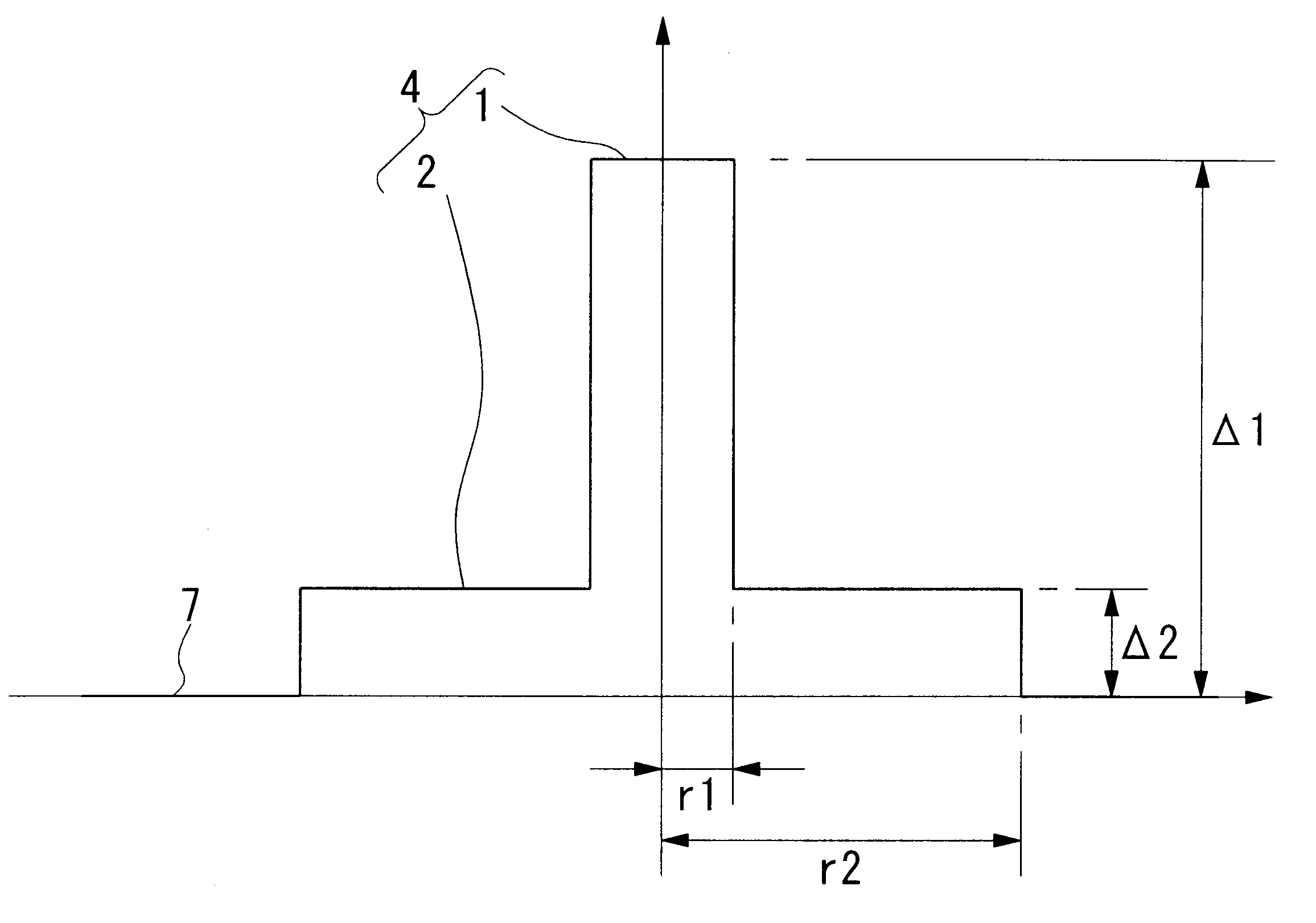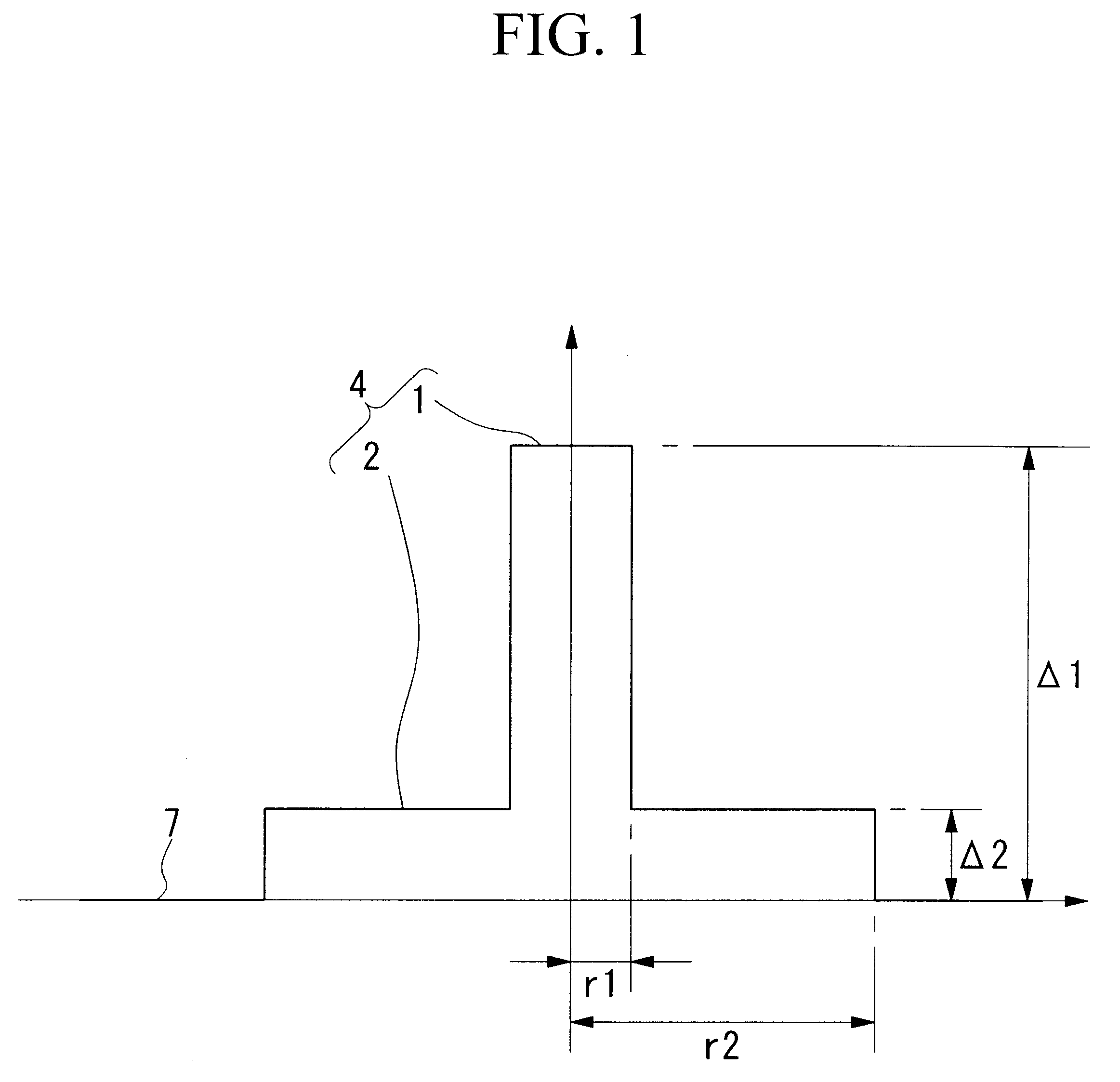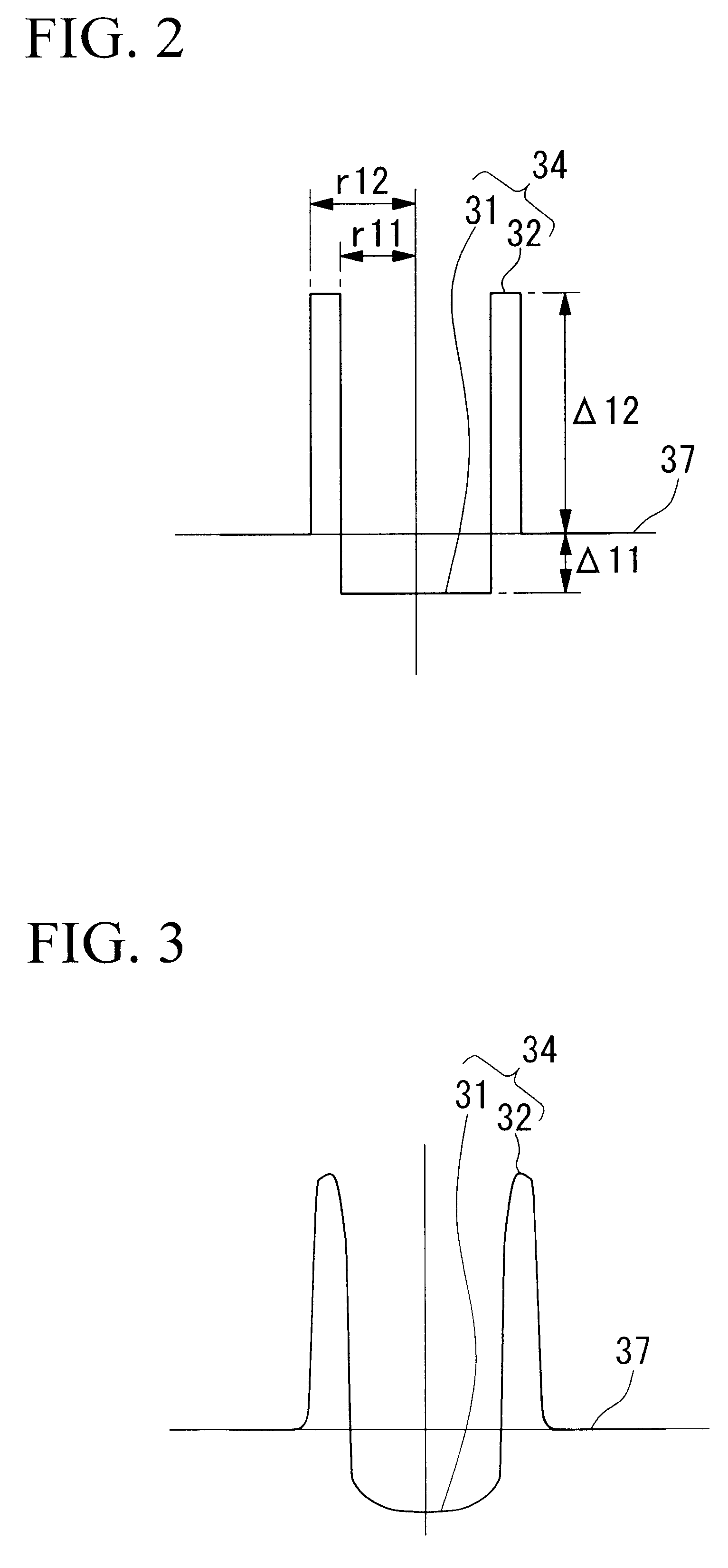Dispersion shifted optical fiber
a technology of optical fiber and shifted optical fiber, which is applied in the field of shifted optical fiber, can solve the problems of deterioration of transmission due to non-linear optical effects, difficult to achieve both aeff and dispersion slope reduction, and improve the effect of enlargement of a
- Summary
- Abstract
- Description
- Claims
- Application Information
AI Technical Summary
Benefits of technology
Problems solved by technology
Method used
Image
Examples
example 2
2. EXAMPLE 2
O Ring Type
FIG. 2 shows an example of an O ring type of refractive index profile as the second example of the dispersion shifted optical fiber of the present invention.
This refractive index profile comprises a core 34 having a two layer structure formed with a central core portion 31 having a low refractive index in the center thereof and a peripheral core portion 32 having a high refractive index provided at the outer periphery of the central core portion 31. A three layer structure (including the cladding 37) convex type of refractive index profile is formed by providing cladding 37 having a lower refractive index than the peripheral core portion 32 at the outer periphery of the core 34.
In this example, the central core portion 31 is formed, for example, from fluorine doped quartz glass to which fluorine having the function of reducing the refractive index has been doped, the peripheral core portion 32 is formed from germanium doped quartz glass, while the cladding 37 ...
embodiments
The effects of the present invention are shown specifically below using embodiments.
FIG. 6 and Table 3 show the results of the embodiment according to the dispersion shifted optical fiber of the first example. In the present embodiment, dispersion shifted optical fibers were manufactured using the VAD method based on the design conditions of the test sample Nos. 1 and 5 shown in Table 1. In the results, in the present embodiment, chromatic dispersion values from +7 to +11 ps / km / nm were obtained in the C-band selected from the range 1490 to 1625 nm. Moreover, because a chromatic dispersion value that is larger than is the case with a conventional NZDSF is set in the C-band in this way, a chromatic dispersion value that is sufficient for performing wavelength multiplex transmissions in the S-band can be guaranteed. Moreover, because the dispersion slope is small, it was confirmed that the chromatic dispersion value in the L-band was also reduced to a sufficient value.
FIG. 7 and Table ...
second embodiment
FIG. 8 and Table 5 show the results of the embodiment according to the dispersion shifted optical fiber of the In the present embodiment, dispersion shifted optical fibers were manufactured using the MCVD method based on the design conditions of the test sample 1 shown in Table 2. The refractive index profile is rounded, however, substantially the same characteristic values were obtained as were expected from the design. In addition, a chromatic dispersion value of between +7 and 11 ps / km / nm was obtained in the wavelength band (the C-band in the present embodiment) selected from the above range in the same way as in the embodiment shown in FIG. 6 and Table 3.
FIG. 9 and Table 6 show the results of the another embodiment according to the dispersion shifted optical fiber of the second example. In the present embodiment, dispersion shifted optical fibers were manufactured using the MCVD method based on the design conditions of the test sample 4 shown in Table 2. In the results, it was ...
PUM
| Property | Measurement | Unit |
|---|---|---|
| wavelength | aaaaa | aaaaa |
| wavelength | aaaaa | aaaaa |
| wavelength | aaaaa | aaaaa |
Abstract
Description
Claims
Application Information
 Login to View More
Login to View More - R&D
- Intellectual Property
- Life Sciences
- Materials
- Tech Scout
- Unparalleled Data Quality
- Higher Quality Content
- 60% Fewer Hallucinations
Browse by: Latest US Patents, China's latest patents, Technical Efficacy Thesaurus, Application Domain, Technology Topic, Popular Technical Reports.
© 2025 PatSnap. All rights reserved.Legal|Privacy policy|Modern Slavery Act Transparency Statement|Sitemap|About US| Contact US: help@patsnap.com



